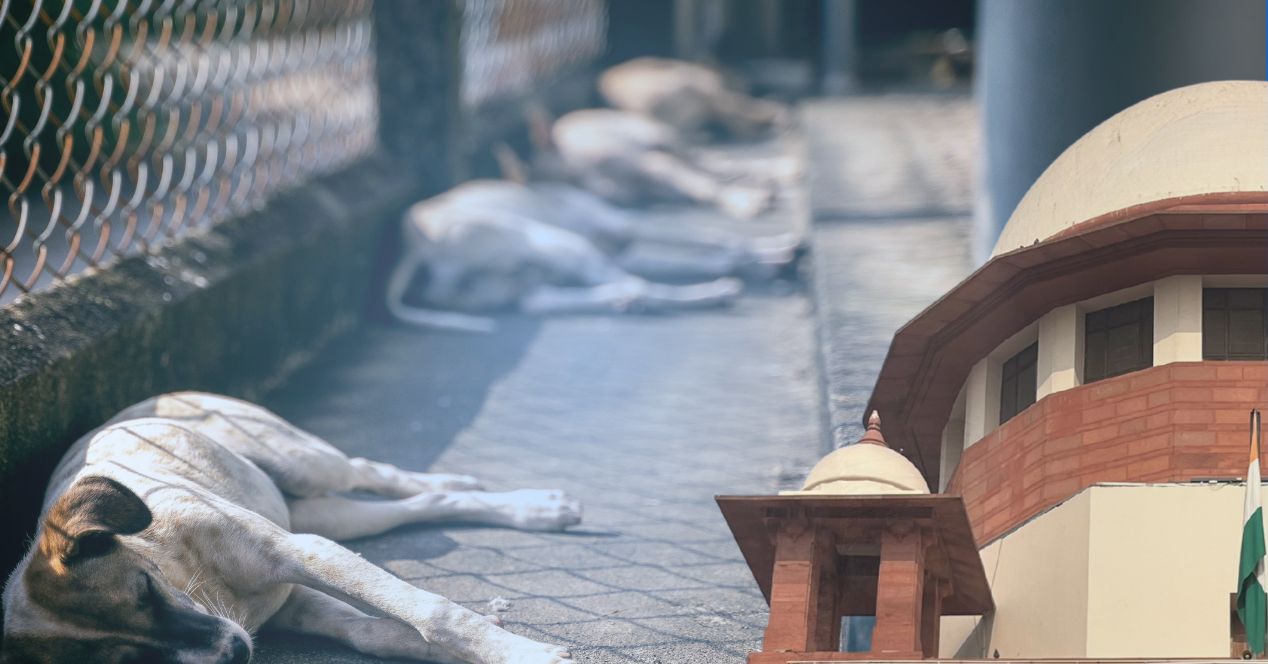Analysis
SC says earlier order on strays ‘harsh’, allows release of sterilised dogs
The three-judge Bench’s ruling modifies the 11 August Order on stray dogs in Delhi-NCR but it raises new questions about municipal logistics

Today, three judges of the Supreme Court modified an Order passed by a two-judge Bench on 11 August directing authorities to round up stray dogs in Delhi-NCR and place them in shelters. The Bench, comprising Justices Vikram Nath, Sandeep Mehta and N.V.Anjaria, observed that the previous Order was “harsh” and “idealistic.”
The three-judge Bench’s solution tries to strike a balance. It upholds rules requiring release of sterilised and vaccinated dogs while carving out exceptions for rabid and aggressive dogs and tightening control through feeding zones, adoption norms and compliance measures.
Release after sterilisation
On 11 August, a two-judge Bench of Justices J.B. Pardiwala and R. Mahadevan directed that stray dogs, once captured and sterilised under the Animal Birth Control Rules, 2023 (ABC Rules), should not be released back to their localities.
Specifically, the Bench issued two directions:
- Para 2(iii): Stray dogs, once relocated to shelters, should “in no circumstances” be released back. Proper records were to be maintained by the authorities.
- Para 2(iv): Dogs must be sterilised, dewormed and immunised and then detained in shelters with sufficient staff to care for them.
In effect, the Order mandated permanent detention of stray dogs after sterilisation, significantly departing from the ABC Rules, which require their release back into the same locality.
Today, the Justice Nath-led Bench put the earlier order “in abeyance for the time being.” The Bench observed that while the 11 August directions might reflect an “idealistic” approach, they were too harsh and practically unworkable. Municipal bodies, it said, lacked the infrastructure and personnel to house and care for all stray dogs.
The Court reiterated Rule 11(19) of the ABC Rules, which requires that once dogs are sterilised, inoculated and dewormed, they must be released back into the same locality. This, the Bench reasoned, avoids overcrowding in shelters while allowing dogs to return to familiar environments.
The Court made a key exception to its direction: stray dogs infected or suspected to be infected with rabies, or those displaying aggressive behaviour, are not to be released under any circumstances. Such dogs, the Bench said, should still be sterilised and immunised but must be kept in separate shelters or pounds.
Yet, the Order leaves some gaps. It does not clarify who is authorised to determine whether a dog is infected or “suspected” of rabies, or what behavioural threshold qualifies as “aggressive.”
The three-judge Bench found merit in the argument of petitioners (which it described as “animal lovers”) that the process of sterilisation and inoculation has significantly curbed the population of stray dogs in towns like Dehradun and Lucknow. It also noted that techniques like chemical castration were safe and painless.
Feeding zones and compliance mechanisms
Today’s Order went beyond release and detention to regulate the feeding of stray dogs. It directed municipal authorities to:
- Create dedicated feeding zones in each municipal ward, with signboards.
- Ensure stray dogs are fed only in these designated areas.
- Act against individuals or NGOs feeding dogs elsewhere.
The Court also directed authorities to establish helplines for citizens to report violations and take legal action against those obstructing compliance.
‘Dog-lovers’ and NGOs to deposit funds
In an unusual move, the Bench directed individual petitioners and NGOs to deposit funds with the Court Registry within seven days (Rs. 25,000 for each individual; Rs. 2 lakh for each NGO). Failure to deposit, the Court said, would disqualify them from further participation in the case.
The Court clarified that these funds would be used by municipal bodies to build facilities for stray dogs. However, the measure appears to effectively make animal welfare groups pay for the implementation of an order. It may also not serve the objective of this suo moto case, which involves a matter of public importance and is meant to be “non-adversarial”
Adoption as an option and expansion of scope
The Bench also endorsed the adoption of stray dogs but cautioned against returning such dogs to the streets. The responsibility to ensure compliance with this direction is on the adopter.
While the application of the 11 August order was confined to Delhi-NCR, the three-judge Bench expanded the remit of the case by impleading all states and Union Territories. It directed their Animal Husbandry Departments to provide information on the implementation of the ABC Rules.
It further sought to transfer all related writ petitions that are pending before High Courts to the Supreme Court for “analogous consideration.”
Open questions
At the outset, the Bench framed the case as a conflict between the right of stray dogs to live on the streets and the right of citizens (particularly children and the elderly) to be safe from stray dogs, many suspected to carry rabies.
Yet, uncertainties remain around the criteria for identifying rabid and aggressive dogs and the logistics of establishing feeding zones. Further, the direction to petitioners to pay a deposit to the Registry risks alienating the very groups that assist municipal bodies in stray dog management.




